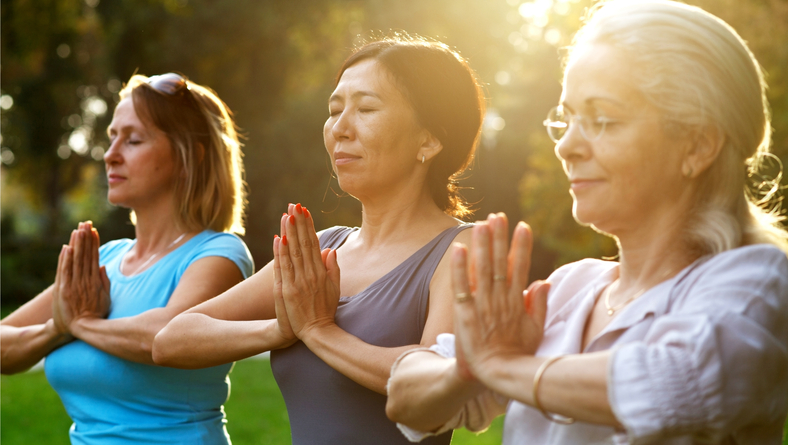How many times have you heard the phrase, “take a deep breath”? Throughout your life, you’ve probably noticed that stopping to breathe can help you feel calmer and regain your composure. Regardless of the reason, controlling your breathing can be helpful in many ways.
Breathing exercises have long been touted by everyone from health care professionals and psychologists to yoga instructors and meditation experts as a secret to feeling great daily. By learning breathing exercises ahead of time, you can call on them when you need them most.
Here are four breathing exercises that may help you cope in stressful and overwhelming situations.
Please note that if you start feeling lightheaded or dizzy at any point during the breathing exercises, stop and make sure you are sitting safely until the feeling passes.
1. Waking Up
When you wake up in the morning, your first instinct is to stretch and take a deep breath. Your body knows that’s what it needs most. Morning breathing can also help you relieve feelings of muscle stiffness and feel better overall after a night’s sleep. Here are a few tips to help you start your day off right:
- Stand upright and then slowly bend at the waist, bending your knees slightly so your legs aren’t stiff. Allow your arms to hang down.
- Slowly take in a deep breath while you slowly “unroll” your body, moving back upright, keeping your head down until your body is straight.
- Once upright, take a moment and then slowly roll back down, bending forward while you exhale.
2. Focused Breathing, with Imagery
This type of breathing allows you to meditate or lets your mind wander.
- Sit or lie down comfortably.
- Close your eyes.
- Take a normal breath and exhale.
- Take a deeper breath, slowly allowing it to fill your belly. Slowly exhale.
- Continue, and concentrate on each breath, noticing sensations in the body and how each breath calms your mind.
Try to do this for at least five minutes every day. For a more focused experience, consider trying out these meditation mantras.
3. Pursed Lip Breathing
This way of breathing can also be helpful if you have breathing difficulties caused by a condition like chronic obstructive pulmonary disease (COPD), or if you are feeling particularly anxious. Pursed-lip breathing slows down your breathing and makes it easier to breathe overall.
- Breathe in normally through your nose.
- Purse your lips as if you are going to whistle or blow out a candle.
- Breathe out gently through your mouth, keeping your lips pursed.
4. Breathing When You Have Pain
When we experience pain, we often hold our breath or breathe in shallow breaths to try to limit any further discomfort. Unfortunately, doing this only serves to increase the stress response and increase pain. If you are experiencing pain, try some deep breathing and relaxation exercises to relieve some of that pain.
- Get as comfortable as your pain will allow.
- Take a slow, deep breath, focusing on the breathing.
- Allow the breath to fill your abdomen. Concentrate on the sensation.
- Slowly exhale, concentrating on allowing the air to slowly leave your body.
The common theme among all methods is to take your time and try to relax. As your breathing techniques improve, you’ll discover they’ll quickly become an automatic response. Soon you’ll be breathing with ease often.

